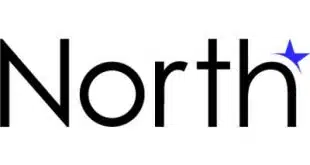EMV is here, but widespread adoption of pay-at-the-table devices has yet to happen. Could that be changing?
When the U.S. payment card industry converted to chip cards using EMV technology more than four years ago, hopes abounded like diners queuing up to eat that the ability to pay at the table would soon proliferate.
With respect to pay-at-the-table point-of-sale technology and the market for it, those hopes failed to materialize. But now that may be changing.
Consumers are fairly comfortable with chip cards—82% of them are at least aware of the cards, found a recent Ingenico Group/FreedomPay survey—and now most merchants accept the cards. By 2030, pay-at-the-table devices will be commonplace, the National Restaurant Association, in its “Restaurant Industry 2030” report, forecasts.
Is the time for broader pay-at-the-table POS adoption finally at hand?
Taking Flight
Travelers moving through Chicago’s Midway International Airport might think so. A $323-million modernization project at the nation’s 25th busiest airport (according to TripSavvy.com) includes a concessions redevelopment that has put pay-at-the-table point-of-sale devices in 28 of the 35 restaurants. Eventually, there will be more than 70 dining and retail brands selling to the more than 22 million passengers annually flying in and out of Midway.
Under the auspices of the Midway Partnership, a joint venture involving Vantage Airport Group, Hudson Group, and SSP America, a full revamp of the airport’s concession is under way and expected to be complete in a year.
SSP America, the Ashburn, Va.-based unit of SSP Group, which has locations in 35 countries and says its restaurants serve approximately 1.5 million daily customers, is shepherding Midway’s pay-at-the-table use.
SSP America provides services at 34 airports in the United States and Canada and uses pay-at-the-table technology across all of its table-service restaurants and bars. Given its parent company’s international presence—it’s based in London—and that more than four years have passed since the U.S. EMV transition began, SSP America considers pay-at-the-table a distinctive, yet conventional service to offer.
With the worldwide adoption of chip cards and U.S. consumer familiarity with the technology, it makes sense to use pay-at-the table, especially where security concerns and table turns, a valuable restaurant metric, are prevalent, the company says.
“Travelers are accustomed to PIN pads these days,” says Todd Kaufman, vice president of information technology at SSP America. “Even if not standard at street-side restaurants, they are familiar with PIN pads at retail stores.”
SSP America uses pay-at-the-table devices with wireless PIN pads and with the same transaction flow seen with POS devices at most quick-service and retail environments, Kaufman says.
“International travelers expect it, since the United States is the last country in the world to adopt pay-at-the-table devices,” he says, adding that SSP America uses pay-at-the-table devices at 100% of its sit-down restaurants across its portfolio.
‘Very Complex’
Some observers expect interest in pay-at-the-table to increase among U.S. consumers, too, “especially as contactless cards become more prevalent,” says Rachel Huber, senior analyst for payments at Javelin Strategy & Research, a Pleasanton, Calif.-based advisory firm. Forty percent of consumers have at least one contactless card today, she says.
“As a consumer, not handing over my card to a stranger is compelling, especially considering security is such a concern for consumers today,” Huber says. “From a consumer-experience standpoint, tapping and paying can help speed up the payment process as well, a common pain point for table-service restaurants. This standard of service has been the norm in Europe for years and one Americans can get on board with, bringing more transparency and trust to the payments process.”
One significant difference be-tween Europe and the United States is that Europeans, having adopted EMV chip cards many years ago, are accustomed to using chip-and-PIN. Chip-and-signature is the U.S. norm. The distinction is important in restaurants because the U.S. tipping culture traditionally obliges the server staff to step away. With pay-at-the-table devices, the server can remain at the table, but not always.
These customs had been contributing factors to the slow U.S. adoption of pay-at-the-table services following the onset of the EMV migration, says Mike Russo, chief technology officer at Shift4 Payments LLC, an Allentown, Pa.-based payments provider. “It never really took off at scale,” Russo says. It was very complex and very expensive, he adds.
That is starting to change as consumers have grown accustomed to using chip cards. And security remains a paramount concern, which means consumers like the idea of not handing over their card to a server who disappears with it for a while. “Most people think [pay-at-table] is cool,” Russo says.
Technical Considerations
Pay-at-the-table consolidates many steps in the restaurant payment process. Ingenico Group, a France-based POS terminal maker, outlines 12 steps in the traditional U.S. restaurant payment, beginning when the server delivers the bill to the guest and proceeding to when the server picks up the signed receipt and returns to the POS system to enter the tip adjustment.
Pay-at-the-table reduces this process to six steps. One time saver, and one that bypasses any social discomfort associated with writing the tip amount with the server present, is when the diner inserts the credit or debit card into the reader and enters the tip. This cuts out the steps in which the server runs the card and makes a tip adjustment.
Shift4, for example, offers its SkyTab device at no cost when merchants sign a processing agreement with the independent sales organization. “With SkyTab, restaurant operations are streamlined, no more back and forth to the table, and since the tip is going in before the payment, no tip adjustment is necessary back on the POS,” Russo says.
Technical considerations also are important. Russo says when a new pay-at-the-table installation is ordered, one of the first steps is that Shift4 reaches out to its partners—it sells direct but also through sales partners, POS system dealers, and independent software vendors—for an assessment of the merchant’s needs.
Generally, pay-at-the-table devices can connect via WiFi or on a cellular network to process transactions. Russo says all SkyTab devices shipping now have a 4G SIM card built in. Cellular can provide a backup to the primary WiFi connection or be the primary option.
One Shift4 client, a pizza restaurant, brings its device along on deliveries so consumers can use their payment cards, Russo says. It also can be useful at resorts, where many might order drinks from the beach.
Cellular is also the choice for the pay-at-the-table service at Midway, Kaufman says. “Nationwide, it’s an airport-by-airport, sometimes unit-by-unit, decision based on WiFi options and cellular strength.”
Technically, SSP America will conduct a wireless or cellular survey of a location. “Questions we need to answer are: How big is the restaurant? What is the number of bartenders and servers? What’s the throughput? How many different service stations?” Kaufman explains.
He says the costs for using pay-at-the-table devices are the same as for traditional POS setups. “There are no additional costs outside possible costs for dedicated WiFi if needed. But the costs are minimal,” he says.
Turning the Tables
A big advantage for restaurants is that pay-at-the-table greatly aids table turns, Kaufman says. Because they’re watching the time to make sure they catch their flights, customers at airport restaurants typically have less patience for slow service or lengthy waits for card transactions.
“For example, where a typical dinner on a high street might involve a bottle of wine, appetizers, entrée, and dessert, we’re serving a glass of wine and an entrée airside,” he says. “So, passengers deeply want the service speed to move along very quickly. The pay-at-the-table devices only help us in this regard.”
For Russo at Shift4, the pay-at-the-table devices are a means to an end. “Our approach goes back to the basics,” he says. With a device in place, it’s easy enough for consumers to make a card payment, generating revenue for Shift4.




